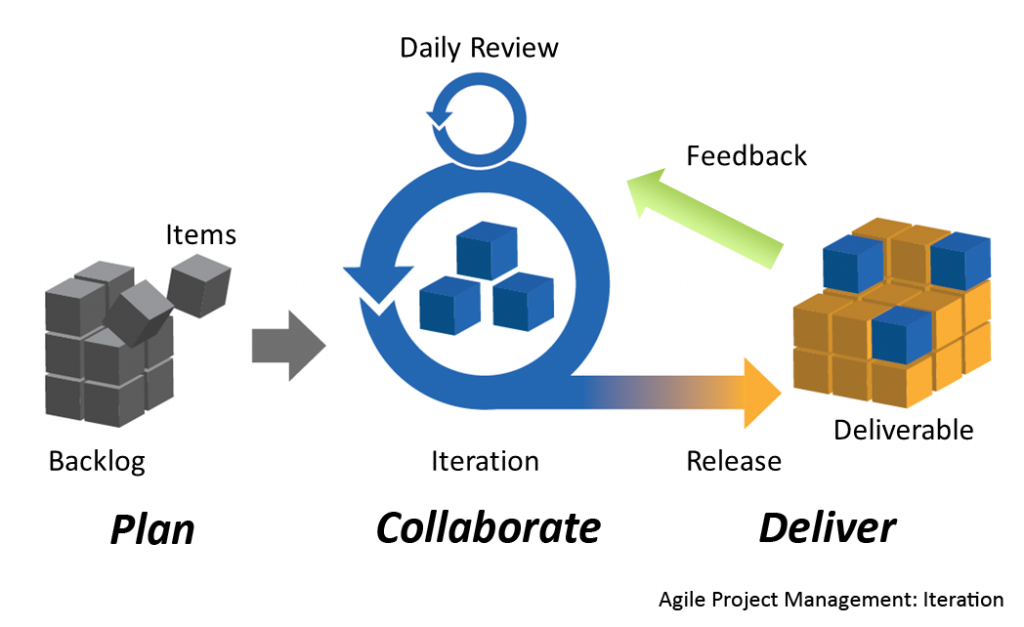Whether in an Agile software development team or any project management team, you’ve probably used Scrum in some form or another to tackle complex projects. That is, you all come together as a team with a set of rituals, ceremonies, and practices to help your team achieve its goals and objectives. The person who leads this is the Scrum Master. You have probably heard the word scrum master many times already. So what are Scrum Master’s roles and responsibilities in Agile?
In this article, we’re giving you the run down so you’re confident about what a scrum master is, how they work, and their impact on the team and the organization’s success.
What is Scrum?
Before we dive deeper into understanding what a Scrum Master is, let’s make sure we know the meaning of Scrum.
The term ‘Scrum’ comes from the sport rugby, where opposing teams huddle together during a scrum to restart the game. In project management, team members huddle together each morning for a stand-up meeting where they review progress and essentially restart the project.
Scrum allows teams to work on complex projects and deliver high-value products by approaching problems iteratively. It’s a simple, straightforward and easy-to-implement way of project planning that is very popular for software development and product development projects.
Scrum (as defined by Scrum Guide) is a lightweight framework that helps people, teams and organisations generate value through adaptive solutions for complex problems.
To learn more about Scrum, check out the article Overview of the Agile Framework.
What is a Scrum Master?
A Scrum Master is an experienced professional who helps the team through the scrum process. Scrum masters facilitate all communication and collaboration between leadership and team members to ensure a favorable outcome. However, they do not participate in the decision-making. Their role is neutral and tries to empower the team to make calls as to what they would like to continuously improve. Think of it as the coach from the sideline who guides and instructs the team, but isn’t actually playing the game. They observe and offer insights and corrective actions but the team is empowered and in charge of the actual play. Instead they are leaders from the side and can help determine the way the team achieves its goals.
Although the title of Scrum Master may sound powerful, this position is not the project leader and is not accountable for project outcomes; instead, the team as a whole bears this duty. Scrum masters serve as coaches to the rest of the group in their role as facilitators so that the team can concentrate on the current Sprint Goals. They also shield teams from external and internal distractions and act as the interface between the team and the rest of the organisation to get the team the resources they need.
Scrum Master Responsibilities
The official Scrum Guide refers to the Scrum Master as a servant leader because their purpose serves the team through the scrum process, creating a framework in which every team member can do their best work to meet a common goal.
The scrum master holds the project together by managing the daily scrum meeting without partaking in it. They encourage teams to interact, share their progress, and plan for the future. Scrum masters aid teams in maintaining burndown charts, organising retrospectives, sprint reviews, and agile sprint planning meetings.
Scrum Masters can work in various contexts, and their roles and responsibilities might change accordingly. Some teams have a fixed Scrum Master, while others rotate different team members through the job on different days. Teams have the option to appoint the Scrum Master according to their needs. Depending on your workplace, you may assume the role of facilitator, coach, or project manager.
Your tasks will change from day to day, but they could include:
Standups
Facilitate daily standups when needed.
At the daily meetings, the Scrum Master asks each member these questions:
- What did you do yesterday?
- What will you do today?
- What blockers stand in your way?
Sprint planning meetings
Define what can be delivered and how that work will be achieved during the next sprint. This ensures that everyone is on the same page before work begins.
Retrospective meetings
Asking everyone to reflect on the last sprint and to share ideas that they can take forward. There are often many ways to get people to share ideas. Picking a retrospective template that has the right theme and approach can help with more engagement because it is relevant to the team.
Board administration
Use scrum tools like scrum boards to keep track of the work of the team. A Scrum board is a tool that helps keep track of a Scrum project and shows how things are going. This can be a whiteboard in the office or if it is a remote team, through Confluence or Trello.
Manage velocity and throughput
Regularly assess burndown charts and other portfolio planning tools to determine what has developed and at what pace. Keeping track of releases and helping teams improve their estimations on tasks increases predictability and the value of the team.
Remove blockers
The scrum master helps the team by getting rid of external roadblocks and dealing with internal ones by improving the process or workflow.
Being the go-between person
The Scrum Master acts as the intermediary between team members, the team, their division, and the rest of the organisation. They communicate and liaise with other project managers, product owners, and leadership through the use of reporting tools and dashboards. They help remove impediments and advocate for the team. They undertake internal consulting to understand the business and client needs and also have one on one sessions with members of the team to continue to support their professional growth and development.
What techniques could the scrum master use?
Scrum methods are the strategies, tactics, and instruments that Scrum masters utilise in their servant-leadership positions. They should facilitate leadership, team building, change management, and issue resolution.
When the Scrum Team becomes embroiled in an internal argument on a project, there are two techniques a scrum master use:
Involve the whole Scrum team in making a decision
In a collaborative setting, decision-making is reinforced because your team will back you.
When there is no need to fear consequences or disengage from the team, one’s risk-taking tendency increases. Some scrum practices that accelerate processes while promoting values and principles include honesty and transparency, clarity, recognising short-term wins, building and cultivating a new culture, empowering each team member, and effective communication.
Use coaching techniques, such as open questions and active listening.
As Scrum Master, you will engage in multiple Scrum Team personalities to build a high-performing team. You are occasionally placed into circumstances when team members conflict. You may need to coach them so that the disagreement remains constructive and does not develop into a war zone. Coaching is a guided conversation intended to clarify discussions, establish objectives, or learn new behaviours.
One of the most successful coaching approaches for encouraging participants to discuss their issues is to ask them open-ended questions such as:
- Tell me more about it.
- How can you do that better?
- Can you explain that to me?
- What will this get you?
- What is it we’re not seeing?
- What is your responsibility?
- May I offer you a suggestion?
After the conversation, you might ask a member to summarise the key points and the following steps to ensure that the follow-up will be beneficial.
How do I become a Scrum Master?
Even though it is not necessary, a bachelor’s degree in IT, business administration, or a similar discipline is preferred by the majority of employers. As a Scrum Master, you will have access to numerous organisations, positions, and industries. Many Scrum masters eventually become Scrum coaches, product owners, or project managers.
Getting a Scrum Master Certification is how you learn the basics of the scrum framework. It helps you discover a Scrum team’s roles, events, artefacts, rules, and other terms and procedures.
However, it is not the only skill set you need. Empathy, communication, interpersonal and facilitation skills need to complement the framework, as well as the understanding of the industry vertical you are working in, the ability to understand and navigate the team through different organisational environments and being able to act as a servant leader to the team. There are often cases where Scrum Masters are not formally certified but are well experienced and have worked well with teams and have a balance between technical and people skills.
A final word on Scrum Masters
Scrum Masters are essential to teams that use an agile development method. This is because development work often requires a lot of flexibility and teamwork.
Some teams may decide they don’t need a Scrum Master if everyone understands scrum methodology and can manage their work in sync with the other team members. Some organisations hire Scrum Masters as consultants instead of putting them on staff.
When you hire a Scrum Master from outside your company, they don’t have any organisational biases and can bring new ideas.
Whatever you choose, the role of the Scrum Master determines the culture of the team and helps teams adopt agile practices with confidence. Creating the right discipline, helping to empower the team and to build a safe space for deliberation, collaboration and decision making.


